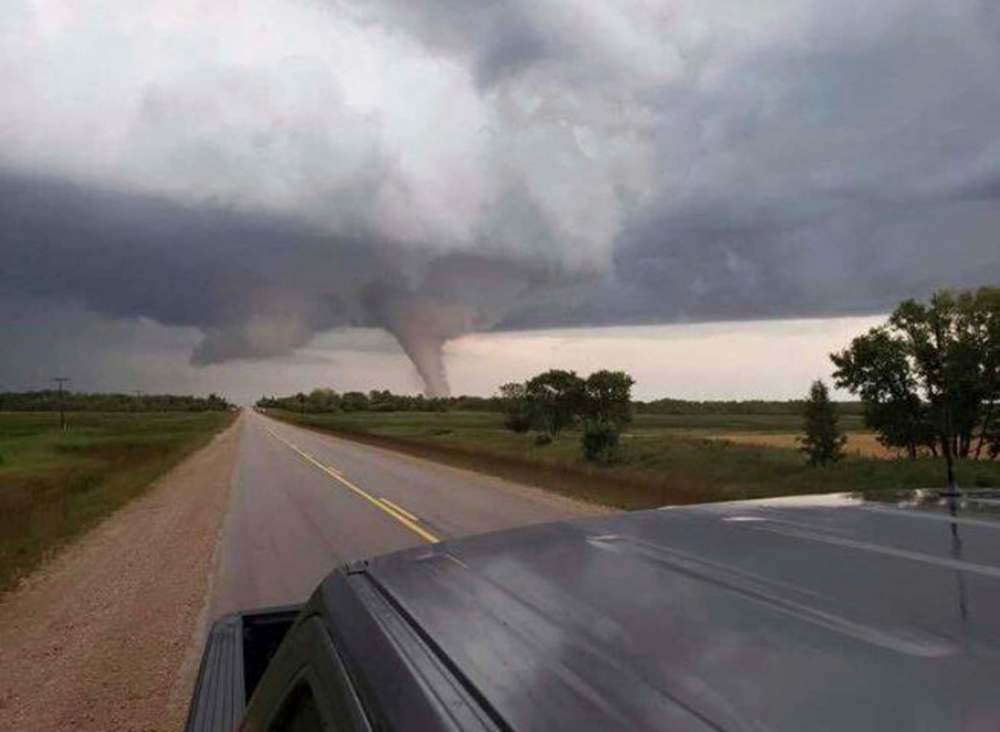Emergency alerts on landlines help bridge rural Manitoba’s digital divide
Advertisement
Read this article for free:
or
Already have an account? Log in here »
To continue reading, please subscribe:
Monthly Digital Subscription
$1 per week for 24 weeks*
- Enjoy unlimited reading on winnipegfreepress.com
- Read the E-Edition, our digital replica newspaper
- Access News Break, our award-winning app
- Play interactive puzzles
*Billed as $4.00 plus GST every four weeks. After 24 weeks, price increases to the regular rate of $19.00 plus GST every four weeks. Offer available to new and qualified returning subscribers only. Cancel any time.
Monthly Digital Subscription
$4.75/week*
- Enjoy unlimited reading on winnipegfreepress.com
- Read the E-Edition, our digital replica newspaper
- Access News Break, our award-winning app
- Play interactive puzzles
*Billed as $19 plus GST every four weeks. Cancel any time.
To continue reading, please subscribe:
Add Winnipeg Free Press access to your Brandon Sun subscription for only
$1 for the first 4 weeks*
*$1 will be added to your next bill. After your 4 weeks access is complete your rate will increase by $0.00 a X percent off the regular rate.
Read unlimited articles for free today:
or
Already have an account? Log in here »
Hey there, time traveller!
This article was published 29/11/2019 (2136 days ago), so information in it may no longer be current.
A Winnipeg entrepreneur wants every rural Canadian landline to ring when an emergency alert is sent out warning of potential disasters — and he’s one step closer after the Rural Municipality of Grey answered his call.
Cellphones buzzed across the province Wednesday afternoon during public alert testing, but in the RM of Grey, residents also heard their landlines ring. If they didn’t pick-up to hear the message, a voicemail was left, if possible.
The Manitoba RM is the first to receive automated Alert Ready emergency messages on landlines through the Connect service, developed by Winnipeg-based All-Net Municipal Solutions.

“There’s a real digital divide in Canada, between rural Canada and urban Canada,” said Vern Sabeski, a managing partner at All-Net. “You have pockets in different areas where there’s no coverage whatsoever.”
Canada’s alert system delivers critical messages to Canadians through television, radio and compatible mobile devices connected to an LTE wireless network. So far in 2019, it has sent one real alert to Manitobans about a tornado.
All-Net services municipalities by collecting residents’ phone numbers and compiling them into a database connected to the national Alert Ready system. The system can also send alerts by text, email, mobile phone and to a website.
The $3,900 annual service also allows municipalities to send residents warnings about everything from boil-water advisories to out-of-service roads. So far, about one-third of Manitoba municipalities have signed up.
In the RM of Grey (its civic office is located in Elm Creek, 60 kilometres southwest of Winnipeg), cell service is patchy at the best of times. Reeve Ray Franzmann knows the exact area in his yard where he can get a few bars.
“Most of our towns, it’s sporadic. It’s there, but it’s not very reliable,” he said.
On Wednesday, more than 500 alerts were sent out to through the All-Net system to residents in the RM’s towns of Elm Creek, Fannystelle, Haywood and Saint Claude.
Franzmann said there are approximately 2,600 residents who live in the four communities, but he’s hopeful more will sign up for the alerts when word-of-mouth spreads. (Residents can only be sent notices if they send their information to their municipality, due to privacy concerns.)
“There’s no real expectation that cell service is going to get better anytime soon, and knowing that landlines are pretty reliable, when this was an option given to us, we were receptive to using it. It’s just another way of getting the messages to the ratepayers,” he said.

Terry Dayholos, acting reeve of Alonsa, said landline alerts are definitely something his RM would be interested in, especially in the wake of a deadly 2018 tornado in the region.
Many Alonsa residents and vacationers at the Margaret Bruce campground on the west shore of Lake Winnipeg, where an August twister touched down — killing 77-year-old Jack Furrie at his area home — didn’t receive an emergency alert on their phones warning them of the storm due to irregular cellphone service.
Sabeski said his concern is the communities that need the service the most are often “the smallest and the most remote and they’re not always the quickest to adapt to new technology.”
“My goal in Manitoba this year is to get everyone connected, every municipal government in Manitoba, but my real challenge, from a business perspective, is to get out across Canada.”
maggie.macintosh@freepress.mb.ca
Twitter: @macintoshmaggie

Maggie Macintosh
Education reporter
Maggie Macintosh reports on education for the Free Press. Originally from Hamilton, Ont., she first reported for the Free Press in 2017. Read more about Maggie.
Funding for the Free Press education reporter comes from the Government of Canada through the Local Journalism Initiative.
Every piece of reporting Maggie produces is reviewed by an editing team before it is posted online or published in print — part of the Free Press‘s tradition, since 1872, of producing reliable independent journalism. Read more about Free Press’s history and mandate, and learn how our newsroom operates.
Our newsroom depends on a growing audience of readers to power our journalism. If you are not a paid reader, please consider becoming a subscriber.
Our newsroom depends on its audience of readers to power our journalism. Thank you for your support.

